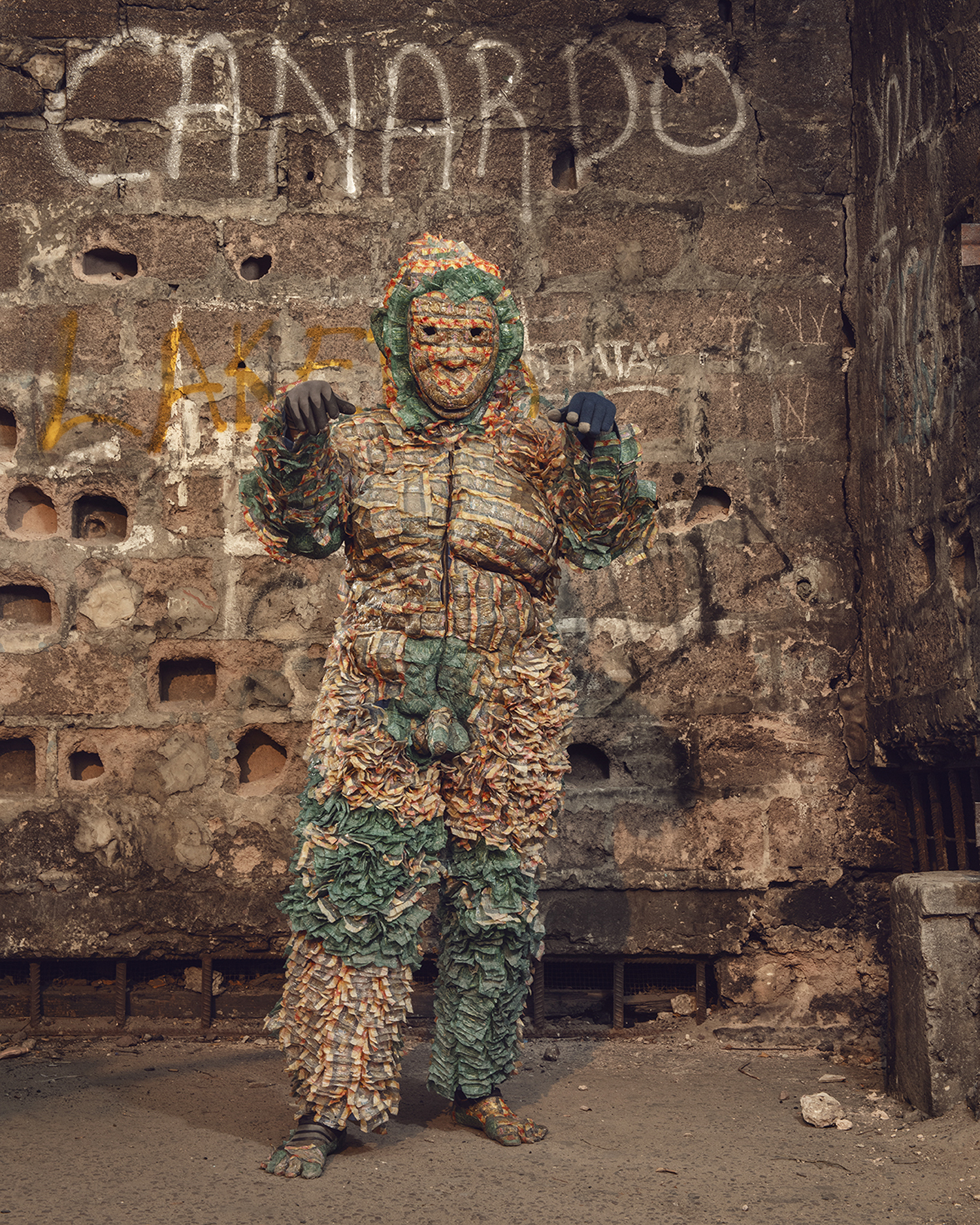

Homme Bonobo
2019 / 2020
Various performances.
Costume made from sweet wrappings.
2019 / 2020
Various performances.
Costume made from sweet wrappings.
In 2007 an ape escaped from Kinshasa’s zoo, taking his revenge against the fellow apes (human beings) who had locked him up, destroying electric cables and other infrastructure.
This work speaks of resistance and existence, as well as the relation of human beings to their environment. The costume is made entirely of sweet wrappings. These have their own symbolic significane in Kinshasa’s circulation of goods, money flows and consumption: Would a street vendor not have, or would not want to give out the exact return of the exchange rate between Congolese Francs and US Dollars, he would propose one or two sweets as reimbursement. With the abundance of such transactions, many of the wrappings end up in the street, resisting natural decomposing processes and standing in for the fleeting moments of exchange rates. Not so their content; absorbed by bodies all over the city, their sugar retransforms into energies spent elsewhere, part of a sugar industry enveloping the globe.
With around 16 million inhabitants, Kinshasa is a human environment in which animals can barely be found. By re-presencing an ape now nearly extinct, the Bonobo, this work bears many questions on the relationship between human beings and fellow creatures on this planet.
This work speaks of resistance and existence, as well as the relation of human beings to their environment. The costume is made entirely of sweet wrappings. These have their own symbolic significane in Kinshasa’s circulation of goods, money flows and consumption: Would a street vendor not have, or would not want to give out the exact return of the exchange rate between Congolese Francs and US Dollars, he would propose one or two sweets as reimbursement. With the abundance of such transactions, many of the wrappings end up in the street, resisting natural decomposing processes and standing in for the fleeting moments of exchange rates. Not so their content; absorbed by bodies all over the city, their sugar retransforms into energies spent elsewhere, part of a sugar industry enveloping the globe.
With around 16 million inhabitants, Kinshasa is a human environment in which animals can barely be found. By re-presencing an ape now nearly extinct, the Bonobo, this work bears many questions on the relationship between human beings and fellow creatures on this planet.